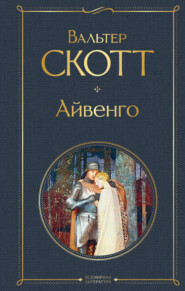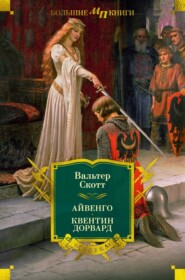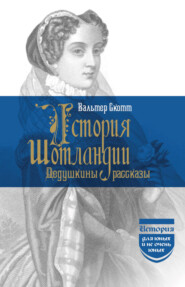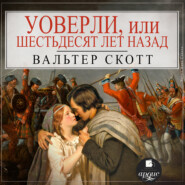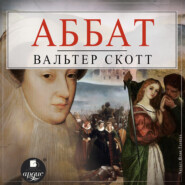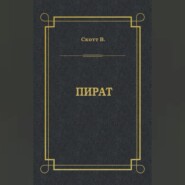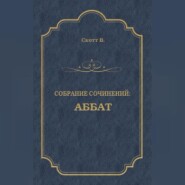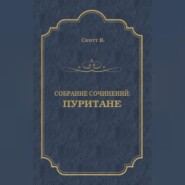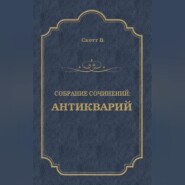По всем вопросам обращайтесь на: info@litportal.ru
(©) 2003-2025.
✖
Kenilworth
Настройки чтения
Размер шрифта
Высота строк
Поля
“The crest is a STAG couchant, vulnerated through the neck by a broad arrow; on his side is a MARTLETT for a difference.”
From this monumental inscription it appears that Anthony Foster, instead of being a vulgar, low-bred, puritanical churl, was, in fact, a gentleman of birth and consideration, distinguished for his skill in the arts of music and horticulture, as also in languages. In so far, therefore, the Anthony Foster of the romance has nothing but the name in common with the real individual. But notwithstanding the charity, benevolence, and religious faith imputed by the monument of grey marble to its tenant, tradition, as well as secret history, names him as the active agent in the death of the Countess; and it is added that, from being a jovial and convivial gallant, as we may infer from some expressions in the epitaph, he sunk, after the fatal deed, into a man of gloomy and retired habits, whose looks and manners indicated that he suffered under the pressure of some atrocious secret.
The name of Lambourne is still known in the vicinity, and it is said some of the clan partake the habits, as well as name, of the Michael Lambourne of the romance. A man of this name lately murdered his wife, outdoing Michael in this respect, who only was concerned in the murder of the wife of another man.
I have only to add that the jolly Black Bear has been restored to his predominance over bowl and bottle in the village of Cumnor.
Note 2. Ch. XIII. – LEGEND OF WAYLAND SMITH.
The great defeat given by Alfred to the Danish invaders is said by Mr. Gough to have taken place near Ashdown, in Berkshire. “The burial place of Baereg, the Danish chief, who was slain in this fight, is distinguished by a parcel of stones, less than a mile from the hill, set on edge, enclosing a piece of ground somewhat raised. On the east side of the southern extremity stand three squarish flat stones, of about four or five feet over either way, supporting a fourth, and now called by the vulgar WAYLAND SMITH, from an idle tradition about an invisible smith replacing lost horse-shoes there.” – GOUGH’S edition of CAMDEN’S BRITANNIA, vol.i., p. 221.
The popular belief still retains memory of this wild legend, which, connected as it is with the site of a Danish sepulchre, may have arisen from some legend concerning the northern Duergar, who resided in the rocks, and were cunning workers in steel and iron. It was believed that Wayland Smith’s fee was sixpence, and that, unlike other workmen, he was offended if more was offered. Of late his offices have been again called to memory; but fiction has in this, as in other cases, taken the liberty to pillage the stores of oral tradition. This monument must be very ancient, for it has been kindly pointed out to me that it is referred to in an ancient Saxon charter as a landmark. The monument has been of late cleared out, and made considerably more conspicuous.
Note 3. Ch. XIV. – LEICESTER AND SUSSEX.
Naunton gives us numerous and curious particulars of the jealous struggle which took place between Ratcliffe, Earl of Sussex, and the rising favourite Leicester. The former, when on his deathbed, predicted to his followers that after his death the gipsy (so he called Leicester, from his dark complexion) would prove too many for them.
Note 4. Ch. XIV. – SIR WALTER RALEIGH.
Among the attendants and adherents of Sussex, we have ventured to introduce the celebrated Raleigh, in the dawn of his court favour.
In Aubrey’s Correspondence there are some curious particulars of Sir Walter Raleigh. “He was a tall, handsome, bold man; but his naeve was that he was damnably proud. Old Sir Robert Harley of Brampton Brian Castle, who knew him, would say it was a great question who was the proudest, Sir Walter or Sir Thomas Overbury; but the difference that was, was judged in Sir Thomas’s side. In the great parlour at Downton, at Mr. Raleigh’s, is a good piece, an original of Sir Walter, in a white satin doublet, all embroidered with rich pearls, and a mighty rich chain of great pearls about his neck. The old servants have told me that the real pearls were near as big as the painted ones. He had a most remarkable aspect, an exceeding high forehead, long-faced, and sour-eyelidded. A rebus is added to this purpose: —
The enemy to the stomach, and the word of disgrace,
Is the name of the gentleman with the bold face.
Sir Walter Raleigh’s beard turned up naturally, which gave him an advantage over the gallants of the time, whose moustaches received a touch of the barber’s art to give them the air then most admired. – See AUBREY’S CORRESPONDENCE, vol.ii., part ii., p.500.
Note 5. Ch. XV. – COURT FAVOUR OF SIR WALTER RALEIGH.
The gallant incident of the cloak is the traditional account of this celebrated statesman’s rise at court. None of Elizabeth’s courtiers knew better than he how to make his court to her personal vanity, or could more justly estimate the quantity of flattery which she could condescend to swallow. Being confined in the Tower for some offence, and understanding the Queen was about to pass to Greenwich in her barge, he insisted on approaching the window, that he might see, at whatever distance, the Queen of his Affections, the most beautiful object which the earth bore on its surface. The Lieutenant of the Tower (his own particular friend) threw himself between his prisoner and the window; while Sir Waiter, apparently influenced by a fit of unrestrainable passion, swore he would not be debarred from seeing his light, his life, his goddess! A scuffle ensued, got up for effect’s sake, in which the Lieutenant and his captive grappled and struggled with fury, tore each other’s hair, and at length drew daggers, and were only separated by force. The Queen being informed of this scene exhibited by her frantic adorer, it wrought, as was to be expected, much in favour of the captive Paladin. There is little doubt that his quarrel with the Lieutenant was entirely contrived for the purpose which it produced.
Note 6. Ch. XVII. – ROBERT LANEHAM.
Little is known of Robert Laneham, save in his curious letter to a friend in London, giving an account of Queen Elizabeth’s entertainments at Kenilworth, written in a style of the most intolerable affectation, both in point of composition and orthography. He describes himself as a BON VIVANT, who was wont to be jolly and dry in the morning, and by his good-will would be chiefly in the company of the ladies. He was, by the interest of Lord Leicester, Clerk of the Council Chamber door, and also keeper of the same. “When Council sits,” says he, “I am at hand. If any makes a babbling, PEACE, say I. If I see a listener or a pryer in at the chinks or lockhole, I am presently on the bones of him. If a friend comes, I make him sit down by me on a form or chest. The rest may walk, a God’s name!” There has been seldom a better portrait of the pragmatic conceit and self-importance of a small man in office.
Note 7. Ch. XVIII. – DR. JULIO.
The Earl of Leicester’s Italian physician, Julio, was affirmed by his contemporaries to be a skilful compounder of poisons, which he applied with such frequency, that the Jesuit Parsons extols ironically the marvellous good luck of this great favourite in the opportune deaths of those who stood in the way of his wishes. There is a curious passage on the subject: —
“Long after this, he fell in love with the Lady Sheffield, whom I signified before, and then also had he the same fortune to have her husband dye quickly, with an extreame rheume in his head (as it was given out), but as others say, of an artificiall catarre that stopped his breath.
“The like good chance had he in the death of my Lord of Essex (as I have said before), and that at a time most fortunate for his purpose; for when he was coming home from Ireland, with intent to revenge himselfe upon my Lord of Leicester for begetting his wife with childe in his absence (the childe was a daughter, and brought up by the Lady Shandoes, W. Knooles, his wife), my Lord of Leicester hearing thereof, wanted not a friend or two to accompany the deputy, as among other a couple of the Earles own servants, Crompton (if I misse not his name), yeoman of his bottles, and Lloid his secretary, entertained afterward by my Lord of Leicester, and so he dyed in the way of an extreame flux, caused by an Italian receipe, as all his friends are well assured, the maker whereof was a chyrurgeon (as it is beleeved) that then was newly come to my Lord from Italy – a cunning man and sure in operation, with whom, if the good Lady had been sooner acquainted, and used his help, she should not have needed to sitten so pensive at home, and fearefull of her husband’s former returne out of the same country…Neither must you marvaile though all these died in divers manners of outward diseases, for this is the excellency of the Italian art, for which this chyrurgeon and Dr. Julio were entertained so carefully, who can make a man dye in what manner or show of sickness you will – by whose instructions, no doubt; but his lordship is now cunning, especially adding also to these the counsell of his Doctor Bayly, a man also not a little studied (as he seemeth) in his art; for I heard him once myselfe, in a publique act in Oxford, and that in presence of my Lord of Leicester (if I be not deceived), maintain that poyson might be so tempered and given as it should not appear presently, and yet should kill the party afterward, at what time should be appointed; which argument belike pleased well his lordship, and therefore was chosen to be discussed in his audience, if I be not deceived of his being that day present. So, though one dye of a flux, and another of a catarre, yet this importeth little to the matter, but showeth rather the great cunning and skill of the artificer.” – PARSONS’ LEICESTER’S COMMONWEALTH, p.23.
It is unnecessary to state the numerous reasons why the Earl is stated in the tale to be rather the dupe of villains than the unprincipled author of their atrocities. In the latter capacity, which a part at least of his contemporaries imputed to him, he would have made a character too disgustingly wicked to be useful for the purposes of fiction.
I have only to add that the union of the poisoner, the quacksalver, the alchemist, and the astrologer in the same person was familiar to the pretenders to the mystic sciences.
Note 8. Ch. XXXII. – FURNITURE OF KENILWORTH.
In revising this work, I have had the means of making some accurate additions to my attempt to describe the princely pleasures of Kenilworth, by the kindness of my friend William Hamper, Esq., who had the goodness to communicate to me an inventory of the furniture of Kenilworth in the days of the magnificent Earl of Leicester. I have adorned the text with some of the splendid articles mentioned in the inventory, but antiquaries especially will be desirous to see a more full specimen than the story leaves room for.
EXTRACTS FROM KENILWORTH INVENTORY, A.D. 1584.
A Salte, ship-fashion, of the mother of perle, garnished with silver and divers workes, warlike ensignes, and ornaments, with xvj peeces of ordinance whereof ij on wheles, two anckers on the foreparte, and on the stearne the image of Dame Fortune standing on a globe with a flag in her hand. Pois xxxij oz.
A gilte salte like a swann, mother of perle. Pois xxx oz. iij quarters.
A George on horseback, of wood, painted and gilt, with a case for knives in the tayle of the horse, and a case for oyster knives in the brest of the Dragon.
A green barge-cloth, embrother’d with white lions and beares.
A perfuming pann, of silver. Pois xix oz.
In the halle. Tabells, long and short, vj. Formes, long and short, xiiij.
HANGINGS. (These are minutely specified, and consisted of the following subjects, in tapestry, and gilt, and red leather.)
Flowers, beasts, and pillars arched. Forest worke. Historie. Storie of Susanna, the Prodigall Childe, Saule, Tobie, Hercules, Lady Fame, Hawking and Hunting, Jezabell, Judith and Holofernes, David, Abraham, Sampson, Hippolitus, Alexander the Great, Naaman the Assyrian, Jacob, etc.
BEDSTEADS, WITH THEIR FURNITURE. (These are magnificent and numerous. I shall copy VERBATIM the description of what appears to have been one of the best.)
A bedsted of wallnut-tree, toppe fashion, the pillers redd and varnished, the ceelor, tester, and single vallance of crimson sattin, paned with a broad border of bone lace of golde and silver. The tester richlie embrothered with my Lo. armes in a garland of hoppes, roses, and pomegranetts, and lyned with buckerom. Fyve curteins of crimson sattin to the same bedsted, striped downe with a bone lace of gold and silver, garnished with buttons and loops of crimson silk and golde, containing xiiij bredths of sattin, and one yarde iij quarters deepe. The ceelor, vallance, and curteins lyned with crymson taffata sarsenet.
A crymson sattin counterpointe, quilted and embr. with a golde twiste, and lyned with redd sarsenet, being in length iij yards good, and in breadth iij scant.
A chaise of crymson sattin, suteable.
A fayre quilte of crymson sattin, vj breadths, iij yardes 3 quarters naile deepe, all lozenged over with silver twiste, in the midst a cinquefoile within a garland of ragged staves, fringed rounde aboute with a small fringe of crymson silke, lyned throughe with white fustian.
Fyve plumes of coolered feathers, garnished with bone lace and spangells of goulde and silver, standing in cups knitt all over with goulde, silver, and crymson silk. [Probably on the centre and four corners of the bedstead. Four bears and ragged staves occupied a similar position on another of these sumptuous pieces of furniture.]
A carpett for a cupboarde of crymson sattin, embrothered with a border of goulde twiste, about iij parts of it fringed with silk and goulde, lyned with bridges [That is, Bruges.] sattin, in length ij yards, and ij bredths of sattin.
(There were eleven down beds and ninety feather beds, besides thirty-seven mattresses.)
CHYRES, STOOLES, AND CUSHENS. (These were equally splendid with the beds, etc. I shall here copy that which stands at the head of the list.)
A chaier of crimson velvet, the seate and backe partlie embrothered, with R. L. in cloth of goulde, the beare and ragged staffe in clothe of silver, garnished with lace and fringe of goulde, silver, and crimson silck. The frame covered with velvet, bounde aboute the edge with goulde lace, and studded with gilte nailes.
A square stoole and a foote stoole, of crimson velvet, fringed and garnished suteable.
A long cushen of crimson velvet, embr. with the ragged staffe in a wreathe of goulde, with my Lo. posie “DROYTE ET LOYALL” written in the same, and the letters R. L. in clothe of goulde, being garnished with lace, fringe, buttons, and tassels of gold, silver, and crimson silck, lyned with crimson taff., being in length 1 yard quarter.
A square cushen, of the like velvet, embr. suteable to the long cushen.
CARPETS. (There were 10 velvet carpets for tables and windows, 49 Turkey carpets for floors, and 32 cloth carpets. One of each I will now specify.)






